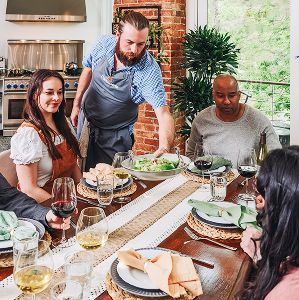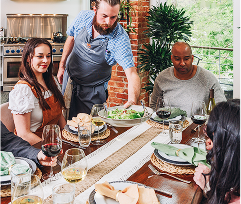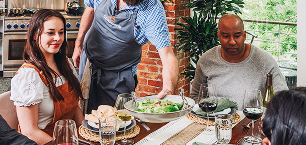What Makes Bibimbap The Ultimate Korean Feast?
CookinGenie lets you travel with food all around the world. Next stop: Korea.
Sometimes, the humblest foods are the best foods. That’s certainly the case with bibimbap, Korea’s answer to fried rice, and—if you ask us—one of the top must-try foods around the world.
The word “bibimbap” means “mixed rice with meat and vegetables,” and variations of the dish abound. It’s a dish that is endlessly customizable based on whatever the cook has on hand: some versions are made with raw beef and eggs, while others incorporate cooked seafood or pork and a fried egg. What all these versions have in common is a base of rice topped with ingredients that are individually prepared and carefully seasoned, then stirred together just before serving. The result is a colorful dish with flavors and textures that are hearty, bold and harmonize beautifully with one another.
In its article about bibimbap, the Korean Culture Blog cites different origin stories for this famed food, which is centuries old. “One story is that ancestral rituals were performed in the countryside away from home and after the rituals, instead of bringing all the foods back home which was cumbersome, the people mixed together all the foods in one big bowl and ate them all. Another story is that bibimbap came from the ancient custom of mixing leftover cooked rice with all the remaining side dishes and eating it as a midnight snack on the eve of Lunar New Year. Another story is that while working out in the fields, the farmers mixed together all the nutritious ingredients in one big bowl to have a quick and healthy meal.”1
Over time, regional variations developed with the most famous version coming from Jeonju, a small city in South Korea. Jeonju bibimbap is made with bean sprouts, gingko nut, pine nut, chestnut, spinach, lettuce, bracken, mushroom, turnip, carrot, seaweed, and beef. It beautifully represents the philosophy of Hansik (traditional Korean food), by combining the five colors that represent the elements that make up the universe—green/water, red/fire, yellow/wood, white/metal and black/earth—and the five flavors: sweet, hot, sour, salty and bitter.2
There are also variations based on the type of dish bibimbap is made and served in. Traditional yangpun bibimbap is served in a yangpun, a large brass bowl, although these days many Korean cooks reach for a stainless steel bowl to make yangpun bibimbap instead3. One of the most beloved varieties is dolsot bibimbap, which is made in a dolsot—a heavy stone or earthenware bowl that’s heated to a high temperature before ingredients are added. The rice goes in first so it cooks in the hot bowl and forms a crispy, crackling bottom crust that adds a satisfying crunch when everything is stirred together.
Bibimbap took flight outside Korea—literally—and gained notice as one of the best foods in the world in the late twentieth century when South Korean Airlines began serving it for inflight meals. Its popularity quickly spread: Wikipedia calls the dish a global symbol that symbolizes the harmony and balance in Korean culture4 and CNN Travel listed it at number 40 on its 2011 list of the World’s 50 Most Delicious Foods.5
CookinGenie’s Jared Kent makes his bibimbap by topping seasoned white rice with spicy ground pork and garlicky carrots, soy-glazed spinach, quick-pickled cucumbers, green onions and kimchi, and crowning it all with a crispy fried egg. (He makes a just-veggies version for you vegetarians out there too). Just before serving, he drizzles the bowl with a sweet-and-spicy gochujang-soy sauce that ties it all together.
And just a quick note: we added bibimbap to our menu at the request of one of our customers. Are you craving a dish and don’t see it on our menu? Just ask! Our team of Genies are inventive cooks with a deep repertoire of recipes—so chances are one of our chefs can help you satisfy your cravings for famous food from around the world. Send us an email with your special request to support@qa.cookingenie.com.



 Settings
Settings
 Gift Card
Gift Card Blog
Blog Locate Us
Locate Us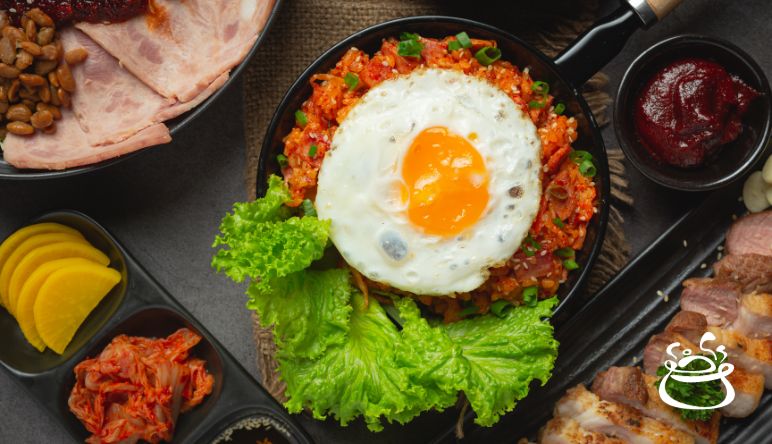

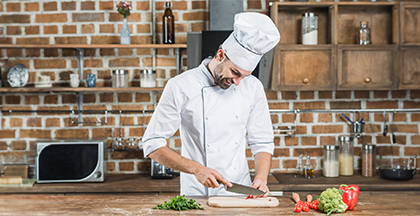
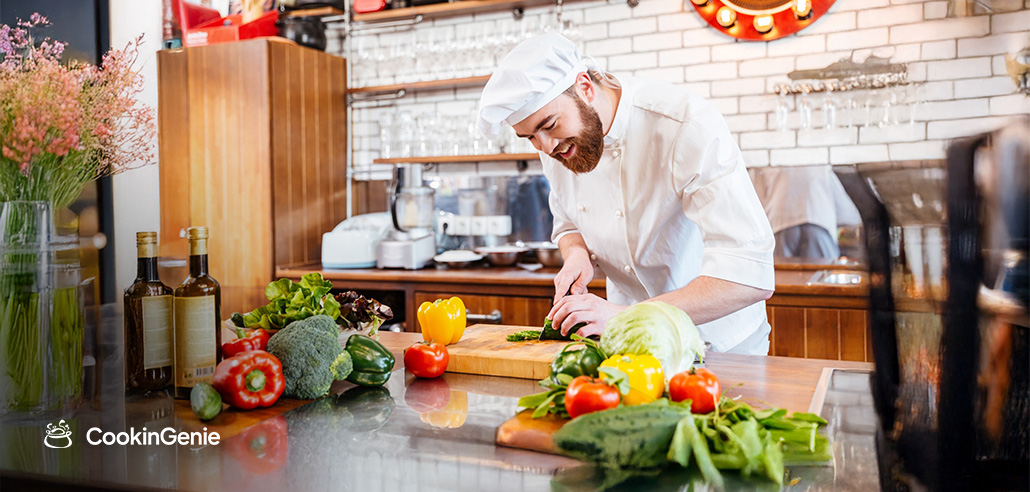
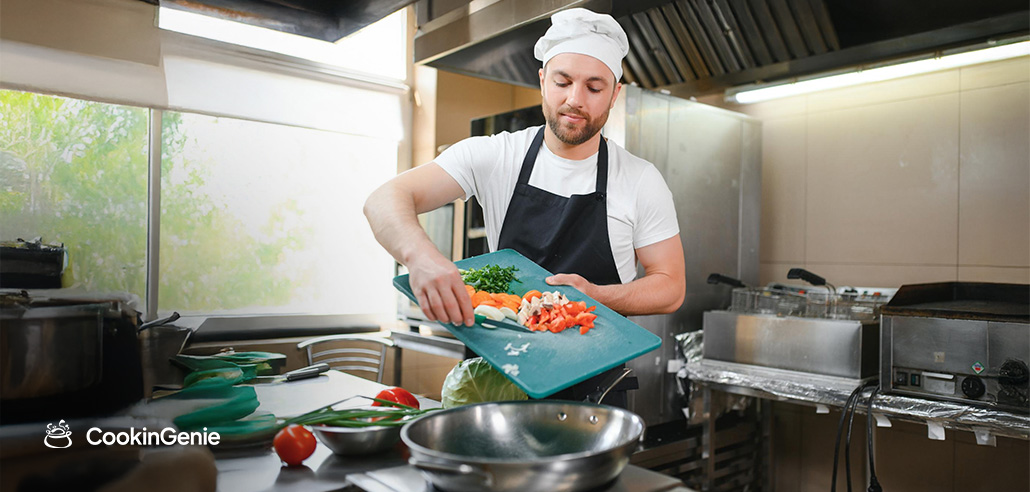
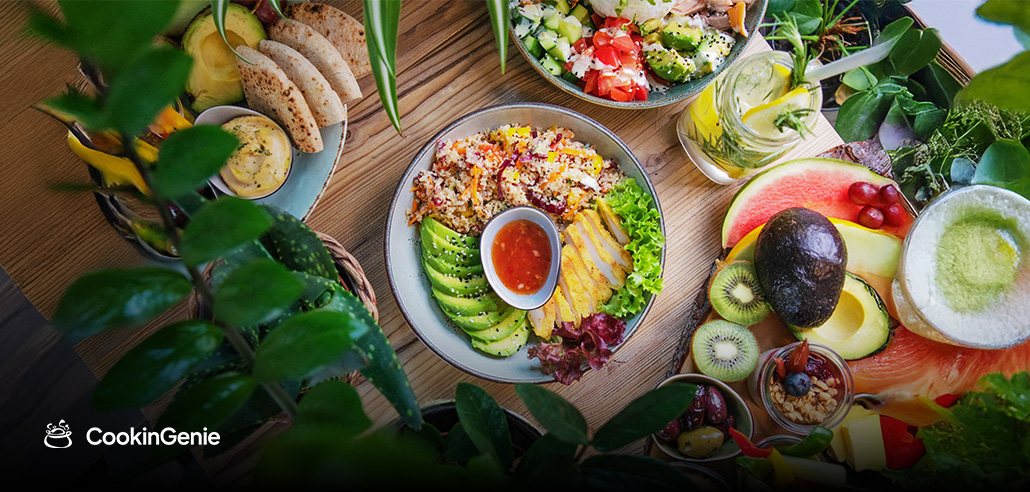

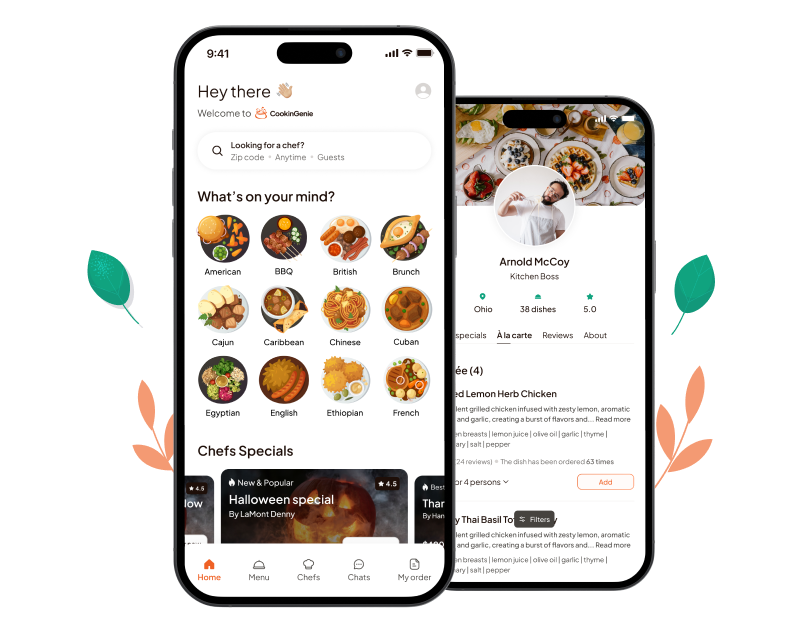



 Home
Home
 Chefs
Chefs
 Chats
Chats
 My Order
My Order

